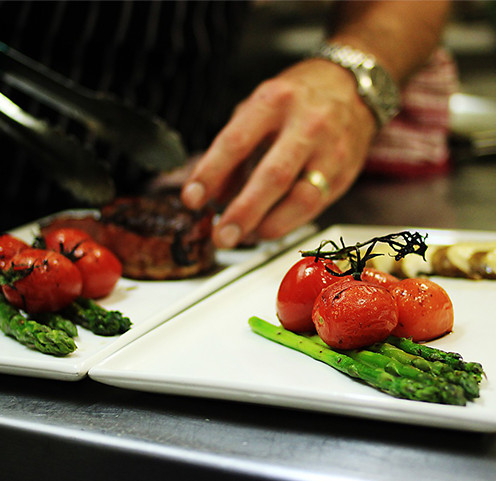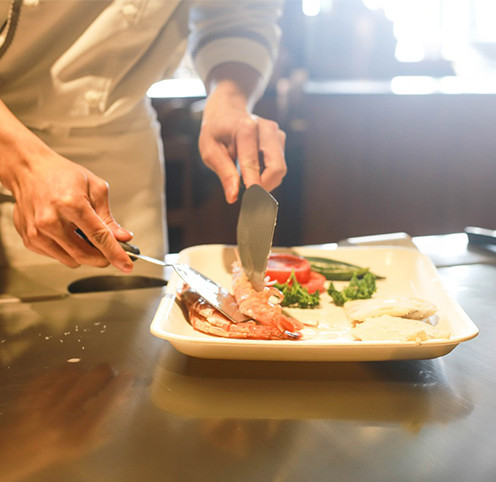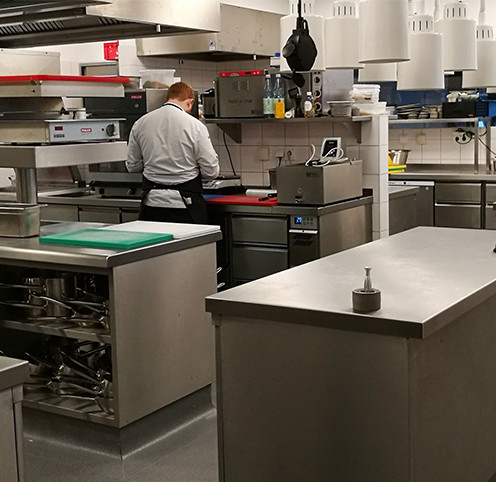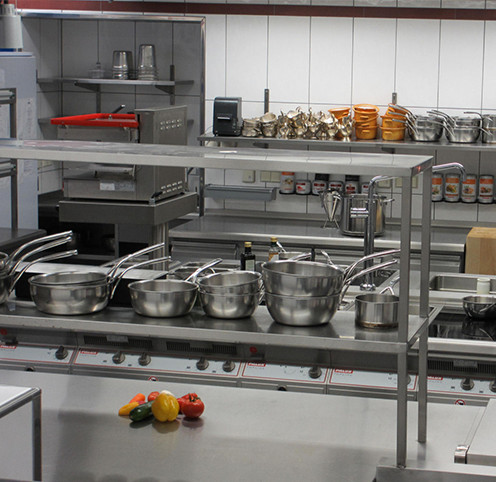I can’t imagine my kitchen without a vacuum packaging machines
“A vacuum packaging machines is one of the multifunctional devices that I use in my kitchen every day,” said Deivydas Praspaliauskas, a representative of Scandinavian cuisine and founder of the Amandus restaurant.
Food waste is a huge problem
In many restaurants and home kitchens, unused or uneaten leftovers are accumulated on a daily basis. This creates a lot of food that is just thrown away, and we all know that such waste is a global problem. A vacuum packaging machines is a device that extends the shelf life of meat, fish, fruit, vegetables and other products, so it can contribute to the solution. The vacuum-sealed product stays fresh for longer, as it is protected from microbiological and physical contamination.
Food spoils due to bacteria, which multiply when the right conditions are created in the air and on surfaces (depending on the temperature, pH and the weather). During vacuum-sealing, the product is placed into a special bag, then the air is sucked out by a vacuum and the package is sealed. This eliminates the medium necessary for aerobic bacteria to multiply.

Why do we need a vacuum packaging machines?
- To provide higher quality, healthier meals. In professional kitchens, products are often vacuum sealed before being boiling in a circulator at a low temperature. Today, this technology is applied being even more widely: to prepare healthier meals, while preserving useful substances, colours and textures, as well as reducing product losses when cooking.
- For freezing. It is highly recommended to vacuum seal products or intermediate goods before freezing them. Once frozen in a vacuum, food does not dry out and it retains more of its nutritional properties. A vacuum-sealed frozen product can be thawed slowly in the refrigerator or by a faster method, like under cold running water (without damaging the package).
- For marinating. Vacuum-sealing is extremely useful for quickly marinating meat or fish. After extracting the air, the marinade penetrates faster into the raw material, so after just an hour you can cook it any way you want.
Types of vacuum packaging machines
Vacuum packaging machines were developed quite recently, in the 1970s, but rapidly gained popularity because they are both practical and easy to use. They come in two types: chambered and external. The main differences are the performance, operation time and the option to vacuum liquids.
An external vacuum sealer requires more skill and effort to use; for example, the bags have to be held by hand. Meanwhile, chamber vacuum sealers are automated, which allows you and your team to save time in the kitchen. Furthermore, this type of vacuum sealer is the only one that can be used to vacuum soups, sauces and other liquid products.
Which vacuum packaging machines is the best?
The following criteria should be taken into account when you are choosing a vacuum packaging machines:
- Frequency of use: estimate how many products you are planning to vacuum per day, then choose the power of the device accordingly (different parameters will determine the amount of air extracted per minute and the pressure);
- Size: estimate the size of the portions to be vacuum-sealed, along with the weight;
- Place of use: a professional kitchen will need a vacuum sealer with at least 200W of power, while 100W should be enough for a home kitchen;
- Storage location and the complete set: a vacuum sealer can be equipped with double-height chambers, trays for vacuum-sealing liquids, label printers or additional sealing strips. Therefore, it is necessary to think of a suitable kitchen location where these appliances can be convenient to store, access and use.

Food safety and hygiene
The Rules for Good Hygiene Practices for Catering Companies, approved by the Ministry of Health of the Republic of Lithuania, state that the shelf-life of a vacuum-sealed product may not exceed 5 days unless it is otherwise specified by the equipment supplier, or its validity is determined by tests in accredited laboratories. Therefore, to ensure the quality and safety of vacuum-sealed semi-finished products and to establish their shelf-life, it is necessary to perform regular controls and laboratory tests.
The films or bags used for vacuum-sealing must be suitable for contact with food, with documents proving their quality. All vacuum-sealed products must also be labelled to ensure traceability. The product label must include the:
- Product name;
- Date and time of vacuum-sealing.

According to the Food Standards Agency in the United Kingdom, vacuum-sealed products must be stored in a cold place at a temperature not exceeding +3 °C (limit – +8 °C). Although the vacuum-sealing prevents the growth of aerobic bacteria, it retains favourable conditions for the growth of clostridium botulinum, which is dangerous to human life. Please keep in mind that vacuum-sealed products cooked in a circulator must be cooled immediately and kept cold.
It is equally important to constantly clean and disinfect the vacuum sealer, to avoid cross-contamination. After all, this device is generally used for a wide range of products.
Vacuum-sealing is useful because:
- It extends the shelf-life – freshness and taste last 3-5 times longer than under normal storage conditions;
- It preserves the texture and appearance, to preserve the quality;
- Moist food does not dry out;
- It saves time – meat and fish marinate more quickly;
- It reduces product losses during heat treatment and helps eliminate food waste.
